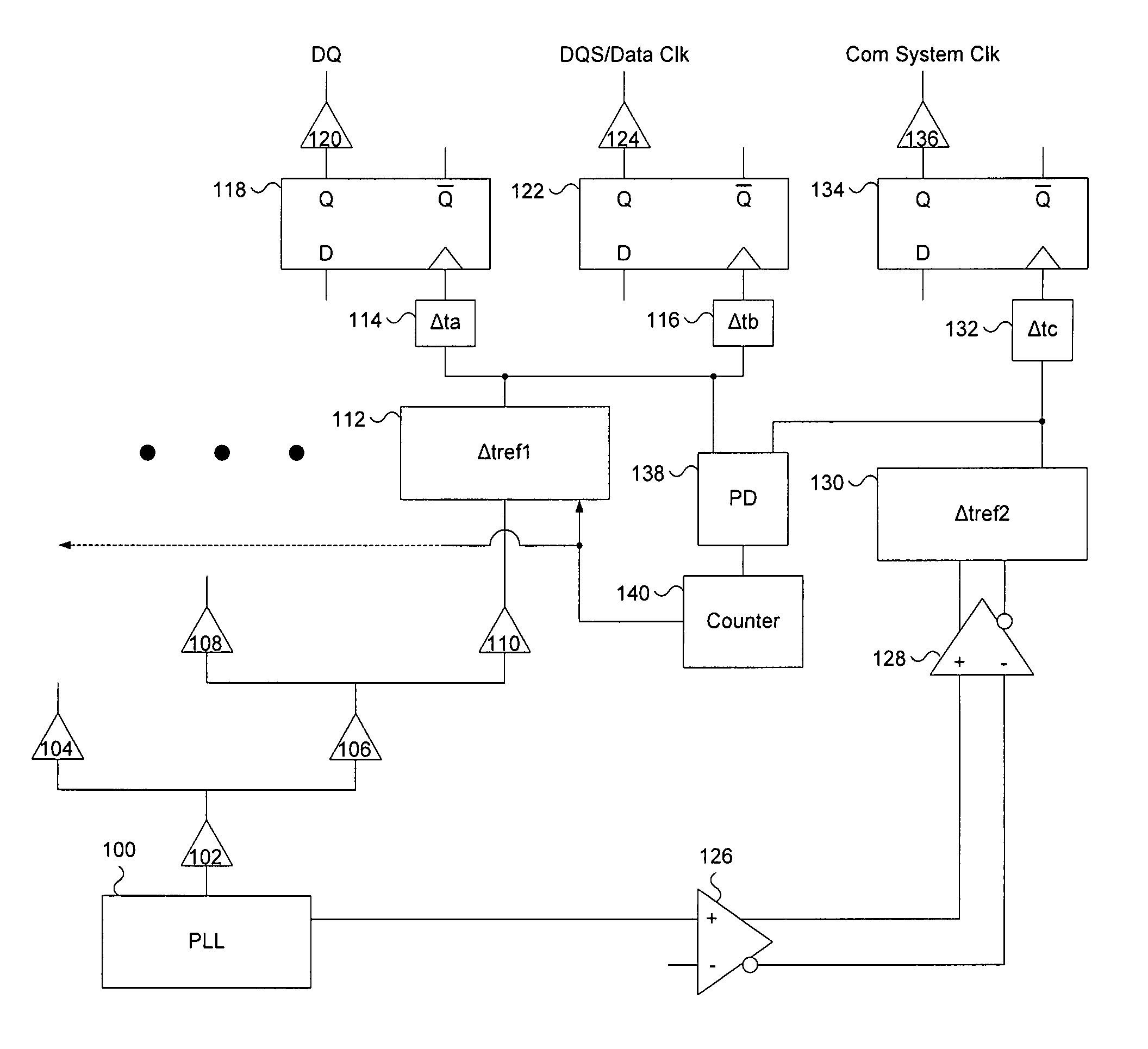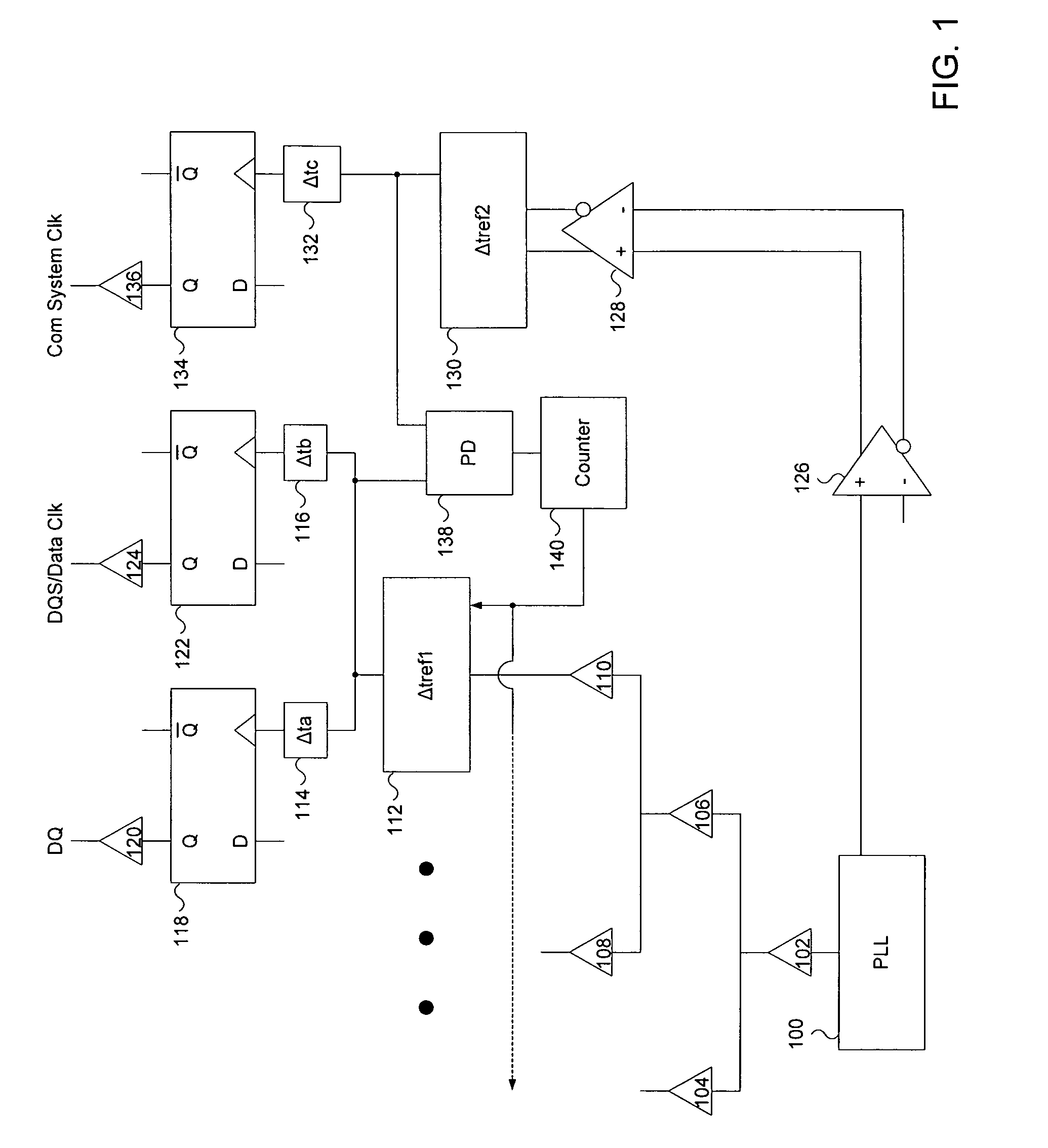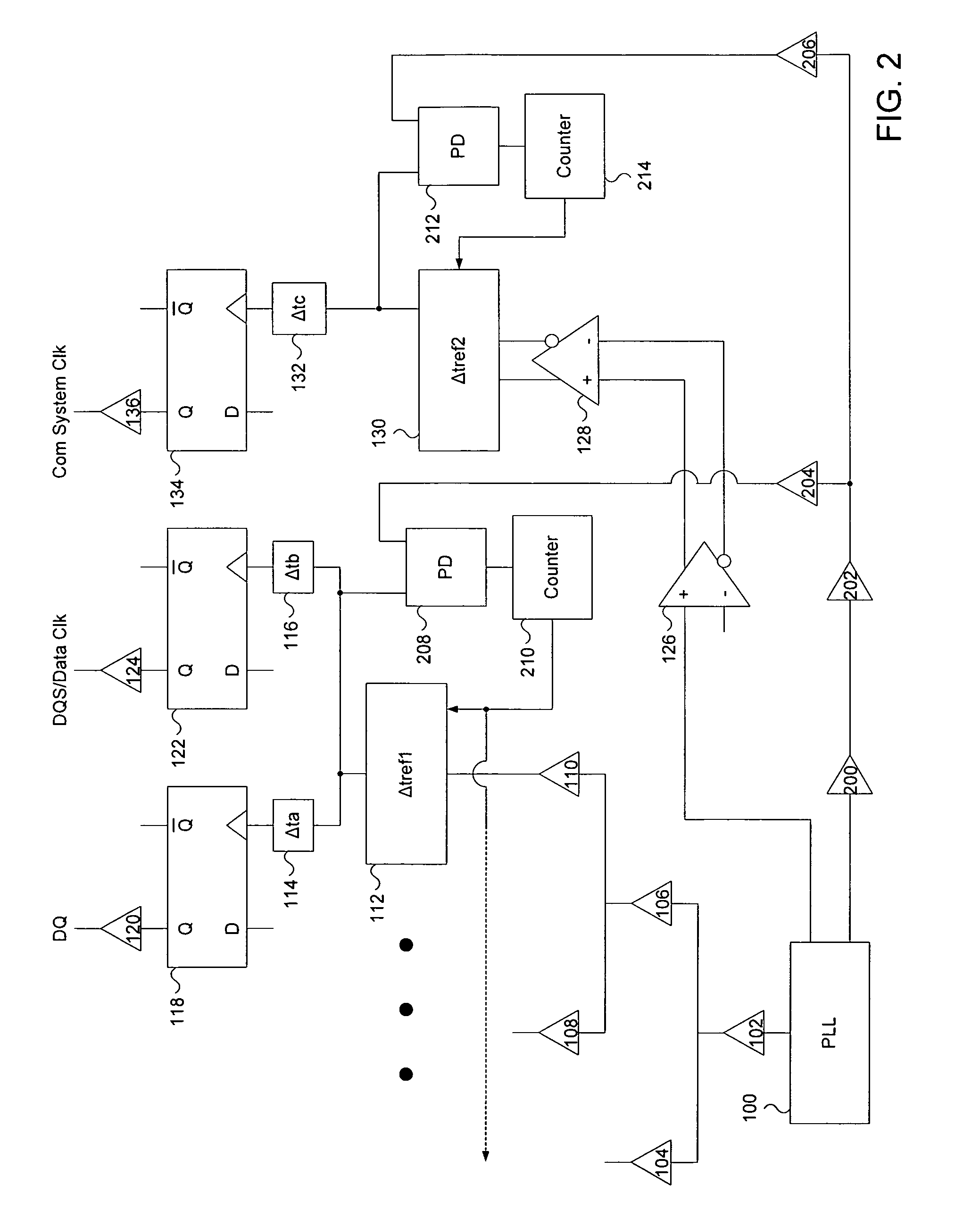Dual-path clocking architecture
a clocking architecture and dual-path technology, applied in the direction of generating/distributing signals, pulse automatic control, instruments, etc., can solve the problems of jitter, noise, and noise of on-die clock trees, such as those that are integrated onto the die of an integrated circuit, and achieve the effect of clocks, and reducing the number of clocks
- Summary
- Abstract
- Description
- Claims
- Application Information
AI Technical Summary
Benefits of technology
Problems solved by technology
Method used
Image
Examples
Embodiment Construction
[0011]Embodiments of a method and device to provide a dual-path clocking architecture are disclosed. Reference in the following description and claims to “one embodiment” or “an embodiment” of the disclosed techniques means that a particular feature, structure, or characteristic described in connection with the embodiment is included in at least one embodiment of the disclosed techniques. Thus, the appearances of the phrase “in one embodiment” appearing in various places throughout the specification are not necessarily all referring to the same embodiment.
[0012]In the following description and claims, the terms “include” and “comprise,” along with their derivatives, may be used, and are intended to be treated as synonyms for each other. In addition, in the following description and claims, the terms “coupled” and “connected,” along with their derivatives may be used. It should be understood that these terms are not intended as synonyms for each other. Rather, in particular embodimen...
PUM
 Login to View More
Login to View More Abstract
Description
Claims
Application Information
 Login to View More
Login to View More - R&D
- Intellectual Property
- Life Sciences
- Materials
- Tech Scout
- Unparalleled Data Quality
- Higher Quality Content
- 60% Fewer Hallucinations
Browse by: Latest US Patents, China's latest patents, Technical Efficacy Thesaurus, Application Domain, Technology Topic, Popular Technical Reports.
© 2025 PatSnap. All rights reserved.Legal|Privacy policy|Modern Slavery Act Transparency Statement|Sitemap|About US| Contact US: help@patsnap.com



